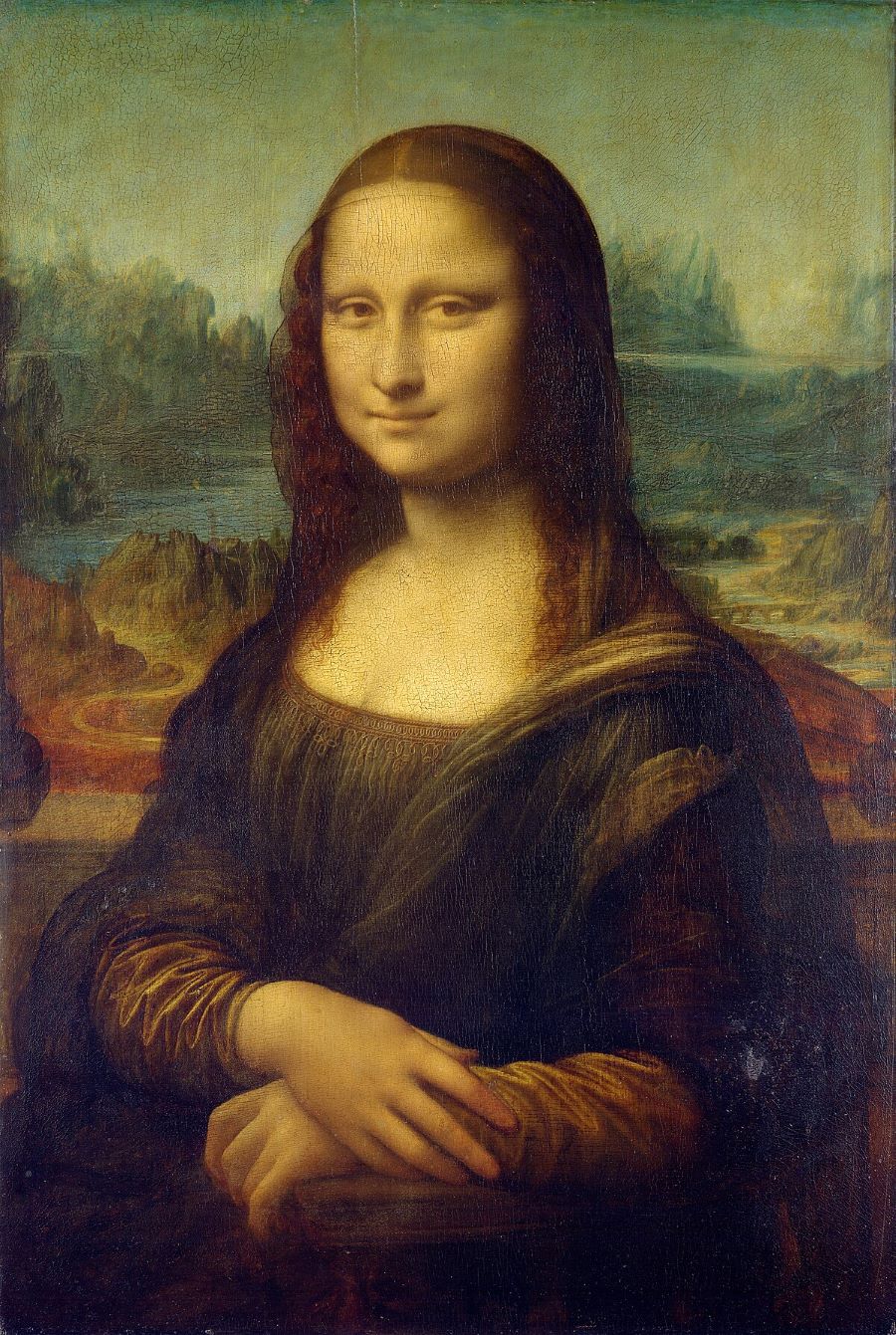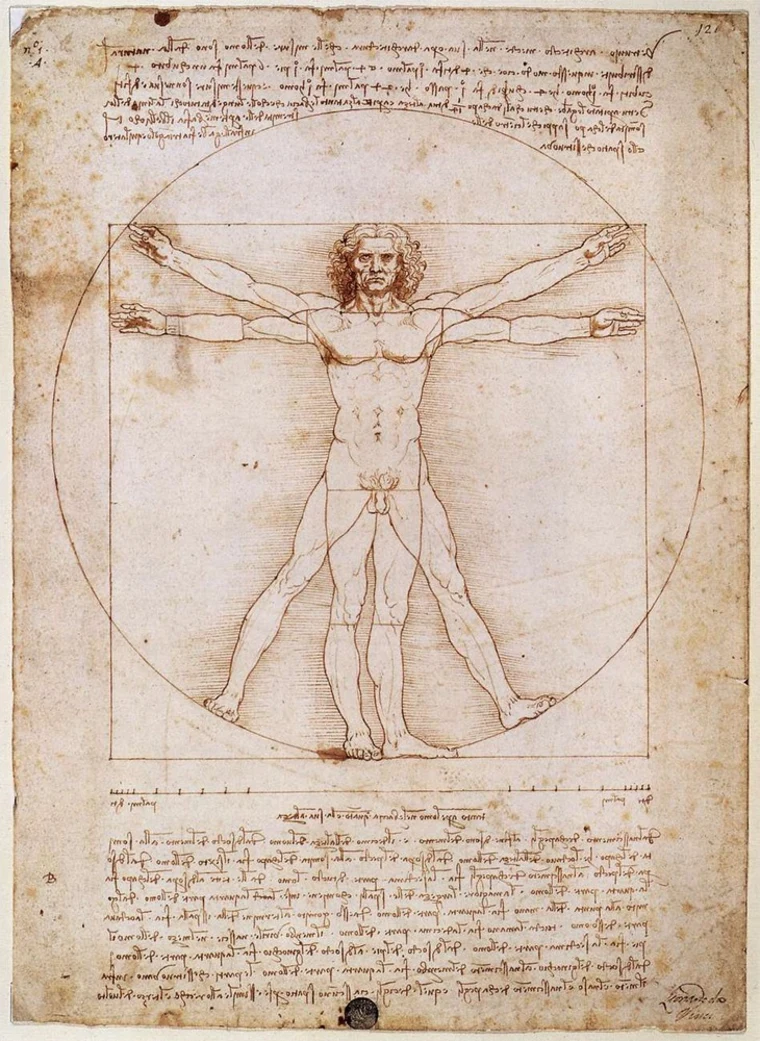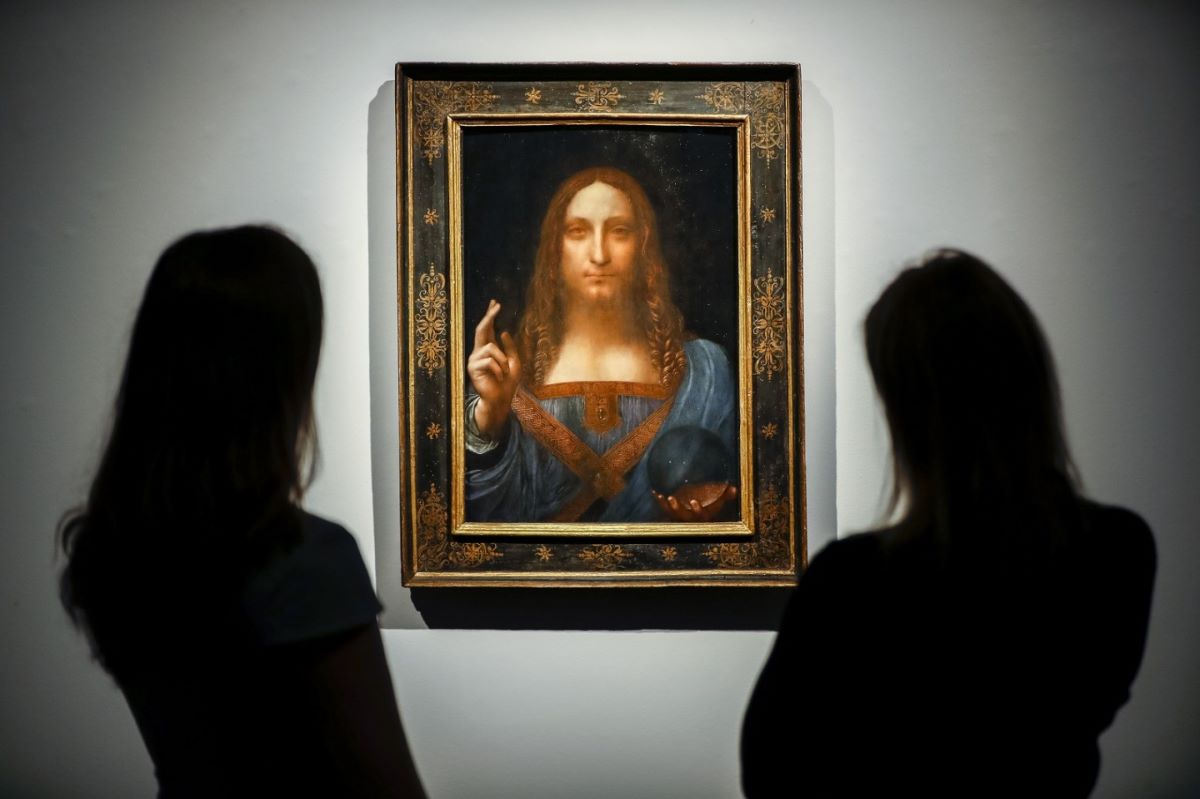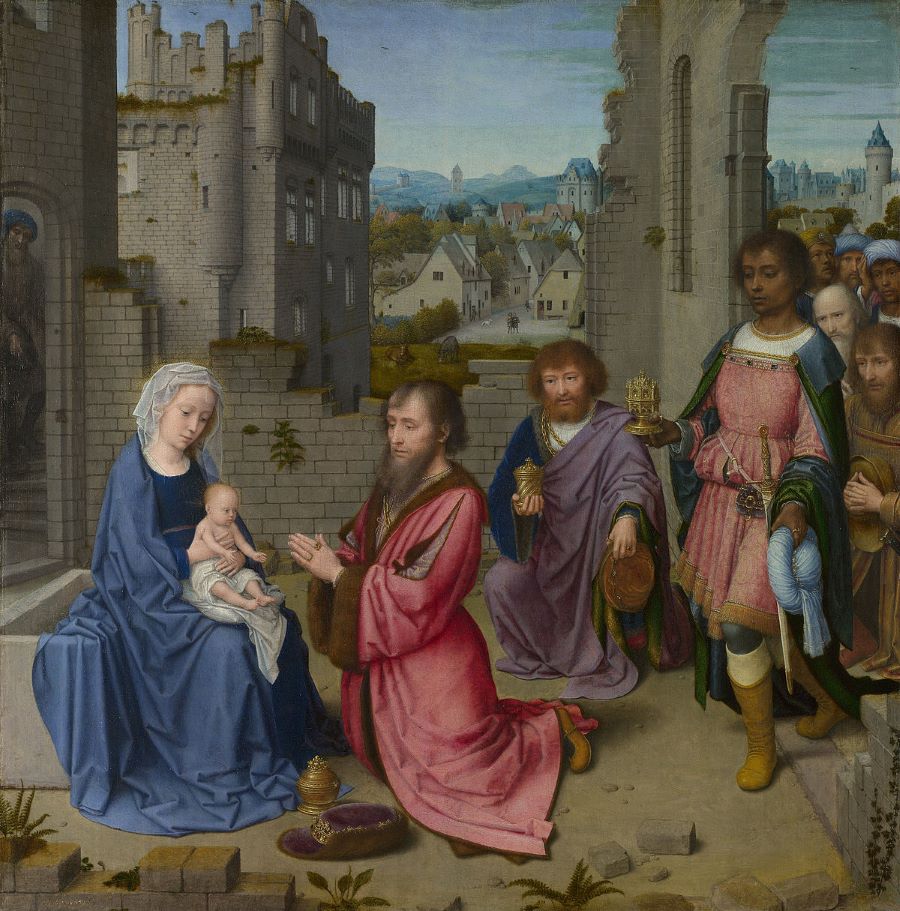Leonardo da Vinci's 10 Famous Paintings and Their Stories
Leonardo da Vinci is one of the greatest artists of all time. His works, from portraits to religious themes, have left a deep mark in the history of world art because of his creativity and outstanding talent.
In this article, we'll explore 10 of Leonardo da Vinci’s most famous paintings, uncovering the fascinating stories behind each piece. Join us as we explore the artistic brilliance, innovative techniques, and historical significance that make these masterpieces timeless treasures.
Mona Lisa

During its 500 years of existence, the masterpiece 'Mona Lisa' has been coveted by kings, emperors, celebrities, men while enraged and celebrated by activists.
Leonardo da Vinci began painting the painting in 1503 and is widely believed to have been modeled on the Italian mother and housewife Lisa Gherardini. The ‘Mona Lisa’ has become famous for a number of reasons.
First and foremost is Leonardo’s skill as a painter: ‘Mona Lisa’ showcases his pioneering sfumato technique. Mona Lisa’s smile was also revolutionary at a time when Renaissance artists rarely showed their subjects smiling. But, perhaps the biggest reason for the ‘Mona Lisa’s’ legendary status is the infamous theft of the painting in 1911, which, like any fame, began with scandal.
To the untrained eye, the ‘Mona Lisa’ appears to be a finished painting. More than finished, in fact – a masterpiece. But many historians believe that Leonardo da Vinci intended to paint more, but never got around to it.
He did not paint for the last five years of his life, and the ‘Mona Lisa’ was among those left unfinished.
Of course, the world has tried to come up with specific reasons for its unfinishedness. In 2005, historian Alessandro Vezzosi discovered a painting of Leonardo with his arm wrapped in some kind of bandage. Vezzosi believes that the right side of Leonardo’s body was paralyzed. And although Leonardo was left-handed, he painted with his right hand.
It was thought that a stroke had left him paralyzed, but in 2009, doctors came to the conclusion that Leonardo had suffered neurological damage from a fall during a fainting spell. Doctors said that Leonardo was unlikely to have suffered a stroke because he did not have any cognitive problems – a common symptom in stroke victims.
The Last Supper

“The Last Supper” is an extremely famous fresco by the Italian painter Leonardo da Vinci. The work was created around 1495 – 1498, depicting the Santa Maria Convent in Milan.
According to what is said, it took Leonardo da Vinci 7 years to complete the painting. When he started painting, Da Vinci painted the image of Jesus first. Later, he completed the remaining 11 apostles in the painting. However, there was one last person who had not been painted, that was the one who betrayed Jesus: Judas Iscariot.
Initially, the Italian painter wanted to find a model of the most despicable, vile person at the bottom of society to draw inspiration for the image of Judas. Finally, after more than 6 years of searching, he found the model for Judas in a Roman prison.
After receiving permission from the king, the criminal was granted a postponement of his execution so that he could pose for Da Vinci. After six months of painting Judas, the painting was finally completed and the prisoner was taken to be executed.
At this point, he rushed to Da Vinci, crying and asking if he still remembered him. Only then did Da Vinci realize the irony that the person chosen as the vile, despicable model for Judas was the handsome young man he had chosen to portray Jesus seven years earlier. A perfect image at first but eventually became a depraved person.
Although the value of the work was not mentioned at all, “The Last Supper” is estimated to be worth $450 million. Leonardo’s masterpiece is said to have attracted such a high valuation due to a combination of the following factors. The painting lively depicts Jesus’ last supper with his disciples before his arrest and crucifixion. It is Da Vinci’s visual interpretation of an event recorded in the Bible.
However, unlike other artists’ depictions of Jesus’ Last Supper, Leonardo’s painting depicts a more stoic scene, capturing the exact moment after Jesus told his disciples that one of them would betray him. Judas – one of Jesus’ disciples – denounced his teacher to the Roman authorities in exchange for 30 pieces of silver.
Da Vinci’s work is therefore valuable in that it depicts the successive reactions of rage, anger, horror, and shock of the apostles. The twelve disciples sit at the table, each with a different expression on their faces, expressing different attitudes to Jesus’ words. Three of the figures are whispering to each other, three look angry, one looks doubtful, another looks surprised. Two feel emotional, one sits upright in a show of loyalty. Only one disciple is depicted with a pale face, leaning back, clutching a money bag – the traitor Judas.
Vitruvian Man

The “Vitruvian Man” is a work by Leonardo da Vinci, painted around 1490 and housed in the Gallerie dell’Accademia in Venice, Italy. Although it is not a large, meticulously colored painting, a drawing within a handwritten page showing Leonardo’s studies of the human body, the “Vitruvian Man” is very famous. The painting depicts a man in two different poses, one with his arms and legs inscribed in a circle, the other in a square. It is based on the idea of perfect human proportions according to Vitruvius, a Roman who lived 15 centuries before Leonardo da Vinci. The inscription at the bottom of the drawing (written in reverse) describes these proportions as follows:
"The length of a man's outstretched arms is equal to his height.
From the hairline to the underside of the chin is one-tenth of a man's height; from the bottom of the chin to the top of the head is one-eighth of a man's height; from the top of the chest to the top of the head is one-sixth of a man's height.
From the crown of the chest to the roots of the hair is the seventh part of the whole man.
From the nipples to the crown of the head is the fourth part of a man.
The greatest width of the shoulders contains within itself the fourth part of a man.
From the elbow to the tip of the hand is the fifth part of a man, and from the elbow to the armpit is the eighth part of man.
The whole hand is the tenth part of man; the beginning of the genitals marks the middle of the man.
The foot is the seventh part of man.
From the sole of the foot to below the knee is the fourth part of man.
From below the knee to the beginning of the genitals is the fourth part of the man.
The distance from the bottom of the chin to the nose and from the hairline to the eyebrows are each the same, and like the ear, one-third of the face."
La Scapigliata

La Scapigliata depicts an unfinished sketch of a young woman, her face looking downcast while her loose, tousled hair flutters in the air behind her. The woman's eyes are half-closed and completely indifferent to the outside world and the observer, while her mouth is slightly raised in a vague smile, reminiscent of the Mona Lisa.
The face takes up the majority of the painting, while the rest of the painting is barely sketched, with the background prepared but unpainted. The distinction between the face and the rest of the painting is effectively combined by the mastery of tonality. Art historian Alexander Nagel comments that the sfumato causes the shadows to obscure any brushstrokes, contributing to the work's mysterious appeal.
There is no real conclusion on the painting's subject, date, history, or purpose. It shows an unidentified woman looking down as her hair fills the frame behind her. Many theories have been put forward regarding the subject: whether it was a sketch for an unfinished painting of Saint Anne, a study for the Virgin of the Rocks, Leonardo's lost painting of Leda and the Swan, or a painting deliberately left unfinished because of its aesthetic value.
The painting was recorded at auction in 1826 from the collection of Gaetano Callani to the National Gallery of Parma, where it is now held. But, evidence of La Scapigliata's existence may date back to 1531, when it may have been owned by Isabella d'Este. Although many studies of Leonardo's work do not address this issue, most scholars who discuss the painting consider it to be a work signed by Leonardo da Vinci, and it has been listed as such in various major Leonardo exhibitions.
Lady with an Ermine

Lady with an Ermine was painted around 1489-1490, more than 10 years before the Mona Lisa. This painting (54.8cm x 40.3cm) is also known as the Portrait of Cecilia Gallerani.
The work depicts the Sienese beauty as a virtuous figure with porcelain-white skin, simple yet elegant hair, and clothing, with a blue sbernia cloak on her left shoulder covering her red dress below, a dark silk band wrapped around her head, holding a delicate gold-trimmed hair veil, and a black string of beads that further adds to the modesty of the figure.
Cecilia's posture in the painting is different from that of the characters in common portraits of that time. She sits leaning to the right, her face turned to the left, her eyes not directed towards the viewer in the usual way but towards a "third party" on the right wing outside the frame.
This pose was a technical breakthrough for Leonardo compared to his contemporaries, who usually painted portraits in a straight-on position. It was the Italian poet Bernardo Bellincioni (1452-1492) who suggested that Cecilia should sit like this as if she were listening to someone speak.
The slight smile on Cecilia's lips always gives the viewer the feeling that she is holding something or keeping it secret. The white ermine she holds in her arms has many similarities to her owner - white fur, dark eyes, and also looking to the right - a detail that is full of hidden meanings.
Portrait of a Man in Red Chalk

One of the earliest known self-portraits belongs to Leonardo da Vinci. However, what makes this portrait interesting is that there is no certainty that the man depicted is da Vinci himself. Dated to around 1510, “Portrait of a Man in Red Chalk” is speculated to be one of the few known self-portraits. This iconic work is currently housed in the Royal Library of Turin in Italy.
The portrait attributed to da Vinci is unique because it was drawn in red chalk on paper rather than paint. Countless copies of this portrait have been made throughout the ages, as it has remained an icon of da Vinci as the “Renaissance Man”.
It is believed that his self-portrait was completed when he was in his late 60s, with the image of an older man accurately representing the age he would have been at the time of its creation. It has been argued that this artwork is a genuine self-portrait of da Vinci, as the style and quality of the drawing are consistent with his other work. However, different historians have disagreed on the identity of the man in the portrait, meaning we may never know the truth.
Salvator Mundi

Salvator Mundi is one of 20 masterpieces by the famous artist Leonardo da Vinci and is the only painting not owned by a museum or government agency but owned by a private individual. However, the identity of the billionaire who paid for this painting is still kept secret. This painting was sold for a record price of 450.3 million USD at an auction held by Christie's in New York in November 2017. This is the highest price ever paid for a work of art in history.
Salvator Mundi is 66cm high, 45cm wide, painted in oil, depicting Jesus wearing a Renaissance robe with his right-hand blessing and his left hand holding a crystal ball. This painting has been described by critics as “the holy grail of the master’s works”. Salvator Mundi is a symbol of art and history, containing sublime cultural and spiritual values. The painting is also a testament to the creativity and innate talent of Leonardo da Vinci, one of the greatest painters of mankind.
Adoration of the Magi

In 1481, the Augustinian convent of San Donato commissioned Da Vinci to paint the “Adoration of the Magi”. His father was in the middle of urging him, including a contract for Da Vinci to complete the work within 30 months. However, the painting remained unfinished, like most of Da Vinci’s works. But this does not mean that Da Vinci was not serious and dedicated. On the contrary, in this unfinished work, his study of painting was deeper than any other master at that time.
Adoration of the Magi tells that when Jesus was born, three elders from the East observed a vision – a new star shining in the sky, and knew that the Saint had appeared. They followed the direction of the star, went to the Holy Family of Bethlehem, offered gifts of gold, myrrh, and frankincense to the Baby Jesus. In ancient Christianity, this theme expressed humanity's expectation and admiration for the Savior.
“Adoration of the Magi” has caused a stir in the art world around the world recently, after conservator Maurizio Seracini commented that Da Vinci could have started painting this painting in 1481, but another artist continued the work. This conclusion is contrary to the original prediction that Da Vinci painted the entire picture.
La Bella Principessa

La Bella Principessa was created before Mona Lisa. The Italian artist da Vinci used an optical illusion technique to give the character a "mysterious smile."
The smile of Mona Lisa has fascinated and confused viewers, as well as scientists, for centuries. Depending on the mood and perspective of each person, Leonardo da Vinci's masterpiece depicts a happy or sad face.
Now there is evidence that Mona Lisa was not the first work of da Vinci to depict a mysterious smile. According to researchers at Sheffield Hallam University (UK), this painting technique was first used by him in the painting La Bella Principessa (The Beautiful Princess).
The 2012 painting La Bella Principessa was recently confirmed to have been painted by da Vinci, before the Mona Lisa in the late 15th century. In the painting, the character has a "mysterious" smile, the shape of the lips changes depending on the viewing angle, similar to the Mona Lisa.
"The results from the experiments support the hypothesis that there is a gaze-dependent illusory effect in the portrait of La Bella Principessa,” said Soranzo, who works in the Department of Psychology. "Although it remains a question whether the illusion was intended, given Leonardo’s mastery of the technique and its subsequent use in the Mona Lisa, it is quite conceivable that the ambiguity of the effect was intentional, based on explicit artistic skill and used in line with Leonardo’s maxim that portraits should reflect some ‘inner turmoil of the mind’."
Ginevra de' Benci

At first glance, this painting might make you think of another version of Leonardo Da Vinci's famous Mona Lisa. But the truth is that Leonardo painted Ginevra de' Benci more than 20 years before he created the Mona Lisa.
Ginevra de' Benci's face is depicted with layers of gradually falling shadows, but Leonardo makes no use of lines or sudden transitions of color and light.
One of the artist's contemporaries wrote that he had painted her “so perfectly that it seemed not a portrait, but Ginevra herself.”
Ginevra's pose was also innovative: she is shown in a three-quarter pose, halfway between profile and frontal view. This is one of the first three-quarter view portraits in Italy.
Newspapers and research papers record that, to draw this angle, Leonardo filled his pages with drawings of everyone he met or saw.
The National Gallery of Art (Washington D.C) has one of Leonardo's sketches during his "practice" to create Ginevra.
Leonardo used a technique called "pouncing" to transfer Ginevra to a wooden board. The artist poked holes along the lines of the drawing, then placed it on a board, then rubbed black chalk over the holes in the wood. Later, when studying Leonardo's artwork, people examined Ginevra under infrared light and discovered the dots from this "pouncing" art.
Ginevra was the beginning of an innovative way of drawing for the painting of that time. Because at that time, female portraits were always depicted from the inside, with only a glimpse of the landscape, for example, through a half-open window… But instead, Leonardo placed Ginevra outdoors. The entire landscape is painted in a light blue-gray tone from afar. The artist believed that our eyes see distant objects more clearly if they are present in blue.
During that period, portraits of women were often commissioned as a “procedure” for engagement or marriage. Wedding portraits are usually painted as a couple, with the woman on the right looking to the left at her fiancé. It is therefore thought that since Ginevra is facing right, this is likely a commemoration of her engagement.
Skilltrans introduces you to some art courses that you can study. Please click on the course name below to learn more:
Learn how to use simple brushstrokes to create six different flowers: lavender, lilac, hibiscus, cherry blossom, calla lily, and magnolias.
Character Art School: Complete Coloring and Painting
You will know all the core theory, workflows and practical application for professional level Character Coloring and Painting.
This course is all about 3D animation, character walk cycle, and moves the character forward at the end of the day!
Conclusion
Leonardo da Vinci’s paintings are more than mere artworks; they are windows into the mind of a genius who combined art, science, and philosophy in unprecedented ways. Each of the ten masterpieces we explored carries a legacy of innovation, storytelling, and profound human insight.
To explore more about the beauty of art, you can sign up for Skilltrans courses. We have a variety of courses to lead you to the world of knowledge.

Meet Hoang Duyen, an experienced SEO Specialist with a proven track record in driving organic growth and boosting online visibility. She has honed her skills in keyword research, on-page optimization, and technical SEO. Her expertise lies in crafting data-driven strategies that not only improve search engine rankings but also deliver tangible results for businesses.



